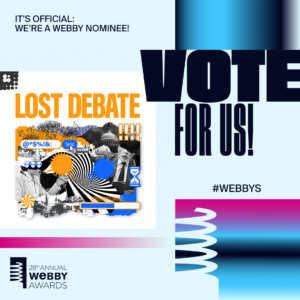If you are like most adults without teenage kids, chances are that you haven’t set foot in a high school in a while. If you did, what you would likely see is depressingly similar to your secondary school experience—even if, like me, you graduated two decades ago.
Sure, the kids may be on laptops and perhaps also on their phones if the school is foolish enough to allow them in the classroom. But the standard model remains largely unchanged. The same subjects are taught in the same way using the same strategies. Somewhere between 20–30 kids per class are seated facing a teacher delivering direct instruction with days organized by hour-long blocks of math, science, English, and history—with the rest of the day filled with half-assed and poorly funded electives. The more advanced kids take Advanced Placement (AP) classes, while everyone else takes a dumbed-down version of the same material. Some “innovative” teachers will lean more on technology and group work, which should also look familiar (one or two eager kids per group carrying the load with the rest slacking off).
I am as guilty as anyone in perpetuating this uninspired model. I once launched a school that mostly resembled this description, and I’m haunted by my failure of imagination.[1] In the six years since serving as a school superintendent, I’ve kept a running list of how I’d design a different high school, if once again given the chance. In this post, I’ll share the least-crazy ideas from that list—and in future pieces, I will go into greater detail on much of what I outline. Many of these design elements have been articulated or even implemented elsewhere, but I have yet to see a school pull them together into anything resembling this combination.[2]
Attention Management
Cal Newport has persuasively argued that the key to personal fulfillment and career success is the ability to sustain long periods of concentration. Yet, we live in an era of rapidly declining attention spans, a problem that is most pronounced (and damaging) in children. The debate around these issues typically centers on specific tools and apps. Do we ban smartphones from schools? Limit children’s time on certain apps? Wait longer before giving kids access to addictive technologies?
These are important questions that schools typically handle piecemeal, if at all. I’d approach these issues differently, first taking a step back to examine the issue of attention management at its roots. I’d design a class that spans all four grades of high school that takes students through an exploration and discussion of the science of concentration—why we often have trouble focusing, what certain technologies do to tap into our propensity for distraction, and what we can do about it. We’d read and listen to material from modern thinkers like Cal Newport, Andrew Huberman, Johan Hari, and Nir Eyal. This class would apply these learnings to specific tools. For example, we’d examine TikTok, pulling apart what makes it addictive and comparing its user experience (UX) and algorithms to other popular social media platforms like Instagram. We’d also embrace the widespread desire of students to be influencers (as opposed to fighting it, which is my first instinct) and discuss the continuum from passive consumption to active consumption to creation. Over time, we’d expose students to examples of substantive creators who have careers outside of social media and use the platforms to display their talents and expertise.
Students would receive two grades in this class. One would be a more traditional letter or number grade based on their mastery of the science and history learned in class (e.g., understanding the anatomy and chemistry of dopamine pathways). The second grade would be a self-assessment and wouldn’t show up on the report card. In practice, this would mean that every week, students would reflect on their screen time usage and compare the time spent on various apps with the time they planned to spend to achieve their personal goals. By the end of their four years, students would become adept at blocking out their days to create uninterrupted periods of deep work, batching smaller tasks that require less cognitive capacity and learning to be deliberate about the times of day and situations when they use distracting technologies. Their evolution would mirror changes to the school day, meaning that as they get older and progress through this process, they would be given more control over their schedules.
Though we would give the students the tools to manage their own attention, we would organize the school day and building to allow for collective blocks and spaces in which students would work and socialize without access to the internet (especially in their first few years). This may seem like a contradiction based on what I argue above, but even the most disciplined person can benefit from an environment that makes the right choices easier (it’s why I don’t keep junk food in my fridge). My colleague Doug Lemov has written about this subject in great detail here.
On Writing
I am a great believer in teaching kids (and adults) to write well. When I was a school principal, I played more of a role in our literacy and composition curriculum than in any other subject. For years, I’ve run a course for political communications directors in which I emphasize the need to master the craft of writing—pulling from works of authors like Strunk and White, William Zissner, and Anne Lamott. At Lost Debate, I run an internal seminar on writing, where I teach many of the same skills and techniques. I love writing, and I believe that it should continue to be central in schools.
That said, too much of our K–12 system (and even higher education) is focused on getting kids to craft the perfect essay. In middle and high school, we typically break those essays into different categories: argumentative, expository, narrative, and descriptive.
Ask yourself: When was the last time your boss asked you to write an expository essay? Or a narrative? Undoubtedly, these essays can be effective stepping stones toward more relevant forms of written expression. Learning to write an excellent argumentative essay will help you one day write a persuasive legal brief. A student adept at the descriptive essay is building muscles that they can flex when writing a novel.
But we aren’t moving on from these stepping stones fast enough. In many (perhaps most) school systems, students write similar essays from late elementary school through their later high school years. The AP Writing exam assigns over half of the awardable points for three pieces of writing: a synthesis essay, rhetorical analysis essay, and argument essay.
The fact that we’re doling out college credit for these godforsaken essays should concern us all. Part of the reason we ask kids to write them year after year is that they are easy to grade. And part of the reason why they are easy to grade is because they’re so formulaic. It’s why we’ve recently been flooded with one article after another, quoting teachers and professors decrying the rise of ChatGPT and what it will mean for student essays. Here’s what one high school teacher wrote in the pages of The Atlantic:
“Let me be candid (with apologies to all of my current and former students): What GPT can produce right now is better than the large majority of writing seen by your average teacher or professor.”
If this clumsy, early version of AI can recreate above-average student essays, that should nudge us to ask students to spend less time on them. One day, not long from now, the tool will come for more creative works, but the current version is still fairly error-prone and cliche-ridden.
What would I replace the college essay with? Whenever possible, I would connect writing with a purpose that students are, or could be, passionate about. Here are a few examples:
- TV and movie treatments and scripts: I believe every high school should have a TV/film department because these mediums are as important, if not more so, to our culture and shared experiences as traditional literature (which, of course, I’d also still teach). Students should watch seminal works, read and analyze scripts, and produce their own written works. If resources allow, I’d then help students produce their films, even using iPhones, if we must.
- Business plans: One of the most important skills for successful entrepreneurs is the ability to communicate your vision in writing. It’s how you raise funds, attract top talent, and map out your founding phase. These are complex documents that involve storytelling, persuasion, industry analysis, talent/product strategy, and budgeting. In the earlier grades, I’d have students write said plans for hypothetical businesses and in the later grades, I’d push them to write plans for original startups that they intend to launch. A side benefit of this approach is that it teaches students about contemporary trends in important industries.
- Professional memos: Most of us, no matter what field we’re in, write these regularly. I’d give students hypothetical business situations (a more accessible version of what business schools do) and have them craft a written memo to key stakeholders outlining a proposed strategy. This could be a hypothetical company where the student pretends to be a chief product officer and wants to convince the CEO to invest more in one product at the expense of another.
These are just a few examples. Other written works I’d consider are scientific papers, narrative podcast scripts, novels/novellas, and even professional emails. I’d also take a page from some fancy prep schools and require students to produce one major original piece of writing to graduate (or, if that’s too much, to graduate with honors).
Applied Science
Growing up, my high school’s message on substance abuse was essentially, “Don’t do drugs.” We rolled our eyes at the finger-wagging, and if it had any effect, it made us more likely to do them. The consequences of that lost opportunity couldn’t have been higher; I lost a lot of friends (including my best friend) to the opioid crisis, and most of them had no idea what the drugs were doing to their bodies and minds.
I mention this because we teach traditional scientific domains, but we rarely integrate them or apply them to practical situations that students are likely to encounter in early adulthood. That’s why the first science class for students would be a course on addiction: drugs, alcohol, social media, and gambling. We’d talk about why these tools and substances are addictive—integrating biology and chemistry—and become nuanced about the differences and similarities between the mechanisms. I’d design similar integrated units around nutrition and wellness, exercise science and physiology, engineering, materials science, and ecology. I’d sequence these units and classes with deep dives into traditional domains to ensure that students graduate with proficiency in all of the basic sciences, but I’d flip the order of priority from the current model, in which we squeeze in occasional practical applications of science, to one where the practical applications are the driving force behind lessons.
An added benefit of this approach is that it will make the subject matter more memorable. Students are much more likely to remember material years later if it’s conveyed through a story that resonates.
Artificial Intelligence
I’d shift the conversation from the alarmism around tools like ChatGPT to a discussion of how students can develop a basic understanding of how these tools work and how they can ethically use them. That means knowing when it’s appropriate to take advantage of the technology and when and how to disclose the use of it. Yes, students should be able to write without these tools, but they should know how to write with them, too. They are separate skills, just like performing math without a calculator or spreadsheet is different from doing it with them. I’d also consider certain flexible standards. For example, an English teacher could allow the use of ChatGPT, but require students to disclose exactly how they used it. A student who produced great work with only minimal or no aid from the tools would get a better grade than one who relied extensively on them.
Given how fast-moving the field of AI is, I’d form a cross-department committee of teachers to continually update the school’s policy regarding these tools. It’s possible that we’d need to revise our practices multiple times per year. I’ll be writing more in this newsletter about this subject in the coming weeks.
Knowledge and Critical Thinking
Stephen Pinker once wrote what I believe is the best distillation of what educated people should know:
“It seems to me that educated people should know something about the 13-billion-year prehistory of our species and the basic laws governing the physical and living world, including our bodies and brains. They should grasp the timeline of human history from the dawn of agriculture to the present. They should be exposed to the diversity of human cultures, and the major systems of belief and value with which they have made sense of their lives. They should know about the formative events in human history, including the blunders we can hope not to repeat. They should understand the principles behind democratic governance and the rule of law. They should know how to appreciate works of fiction and art as sources of aesthetic pleasure and as impetuses to reflect on the human condition.
On top of this knowledge, a liberal education should make certain habits of rationality second nature. Educated people should be able to express complex ideas in clear writing and speech. They should appreciate that objective knowledge is a precious commodity, and know how to distinguish vetted fact from superstition, rumor, and unexamined conventional wisdom. They should know how to reason logically and statistically, avoiding the fallacies and biases to which the untutored human mind is vulnerable. They should think causally rather than magically, and know what it takes to distinguish causation from correlation and coincidence. They should be acutely aware of human fallibility, most notably their own, and appreciate that people who disagree with them are not stupid or evil. Accordingly, they should appreciate the value of trying to change minds by persuasion rather than intimidation or demagoguery.”
This is an excellent start. I’d add a few elements. I’d expose students to old political and philosophical debates (socialism v. capitalism, consequentialism v. deontology) as well as some relatively new ones (techno-optimism v. pessimism, interdependence v. protectionism, privacy v. security). I’d lean into the political circus around “critical race theory” by having the students themselves read commentary about (and excerpts from) the 1619 Project and 1776 Project, have them debate the merits of those curricula (using primary source material to verify or refute claims), as well as the culture clashes that resulted from them—and have them compare those works with other comprehensive works that have faced less scrutiny, like Jill Lepore’s These Truths (or more accessible versions for those whose reading levels aren’t there yet).
Math
I’d take a page from the Gates Foundation and prioritize statistics and data science pathways, which are more relevant to more jobs than the calculus pathways (which I’d still offer) that currently dominate. The curricula in these domains aren’t great yet, but a Stanford professor has helped craft K–12 standards for what such a data science track might look like. They also offer a course for teachers. Khan Academy also has a few courses on statistics and probability designed for high school students. These are all steps in the right direction but are insufficient for the shift I’m proposing. However, I expect Gates’ investment will yield the tools teachers and school leaders need to pull off this shift.
I’d also require students to demonstrate basic proficiency in personal finance. Right now, fewer than a quarter of students have guaranteed access to personal finance courses—and only 15 states require such access. This is despite the fact that Americans believe practical skills like managing finances should be the number one priority of schools.
I wouldn’t stop at basic proficiency, though. I’d also offer more advanced financial instruction—from how to build sophisticated budgets (personal and for businesses of different sizes), read financial statements, and conduct negotiations, as well as lessons about common concepts in investments like options, exchange-traded funds (ETFs), and traditional equities.
No More Grade Levels
A group of school superintendents took to the pages of Education Week last year to argue for a radical shift in how we think about the relationship between time and learning:
“Rather than courses being a semester or a year long, courses would be as long as necessary for each student to gain the competency needed to take the next course in the sequence. That will require rethinking the master schedule, how we group students, and how we assign teachers.
Instead of all students taking an algebra course in the same grade but at different levels of rigor, all students would learn the same algebra, but some might do so earlier than others. Because every student would need to reach proficiency in reading and math to graduate, we would no longer tolerate students falling multiple grades behind. We would intervene early and often, so interventions would be common and lose their stigma.”
This model is called “competency-based learning” – something incredibly rare within schools, despite the fact that Americans rank it extremely high on their list of priorities.
We discussed the merits of this approach on a recent episode of the Citizen Stewart Show. To sum up the benefits: This would relieve teachers of the burdens of balancing disparate levels of proficiency in the same classroom, help struggling students address learning gaps without having to worry about keeping other kids engaged, and allow more advanced kids to fly through material without having to wait around for everyone else to catch up. Instead of having honors or advanced tracks of students, you simply have a continuum of different courses and skills. A student could be behind the average in math but ahead in reading (as I would have been in high school). An A+ version of this model would incentivize students who move through material quickly to tutor struggling students (perhaps requiring a certain number of hours of tutoring before moving on to the next unit).
This approach would require the school to offer more advanced courses—something that could be accomplished by offering apprenticeships, partnering with local colleges, or using online materials, such as Massive Open Online Courses (MOOCs) and Khan Academy.[3]
It would also require us to rethink the role of the teacher . . . .
From Instructor to Coach
The traditional image we have of a teacher is the sage on a stage, delivering direct instruction to a group of 20–30 students. A great educator, however, plays a number of different roles: tutor, mentor, coach, and, yes, instructor. The latter is actually the least important in 2023 because of the abundance of incredible instructional material online. You can usually find an excellent explanation of almost any concept on the internet and, with few exceptions, you can find entire courses mapped out with high-quality video instruction and adaptive practice questions (and if they don’t exist, a school could create them once and then update them over time). Educators sometimes get defensive when I point this out because it implies that the role of the teacher is obsolete. However, this technology frees the teacher to do the most rewarding parts of the job: work with students to set and accomplish goals, mentor them through the ups and downs of adolescence, and offer targeted tutoring.
This is what Americans want. Among 57 possible goals of our K–12 system, they rank “all students receive the unique supports that they need throughout their learning” number five, “students advance once they have demonstrated mastery of a subject” number seven, and “all students have the option to choose the courses they want to study based on interests and aspirations” number nine. It’s time to give them what they’re asking for.
Data
I’d replace the traditional report card with a real-time dashboard that parents, students, and educators can access at any time. We had a crude version of this at my network back in the day, and I know this practice is generally much more widespread than much of what I’ve outlined in this piece.
A few other unique features of our dashboard would include a section that only the student can access. This would include private, more personal goals (around wellness, for example). I’d also allow parents and students to opt into the use of a technology like the Oura Ring for tracking sleep and recovery because we all know how important rest is to students’ mental health and academic performance. Students and parents can decide whether an educator has access to that data.
Fitness, Hobbies, and Sports
A surprising finding from the Populace data is how parents think about sports. They ranked “students develop athletic talents” 56th out of 57 possible options. This shouldn’t necessarily prompt a wave of budget cuts to sports programs, but it should push us to think about how that money is spent.
I’d treat physical and mental fitness as its own bucket and offer every student a mixture of Zones 2 and 5 cardiovascular training, strength training, and mobility/flexibility work. (See here for an explanation of Zone 2 versus Zone 5 and the importance of both.) Students would have some form of exercise every day, as follows: two days of Zone 2, one day of Zone 5, two days of strength, and mobility/flexibility every day. This may seem like overkill, but childhood obesity rates suggest that we are in a national crisis—and many high school athletic departments bring this level of thought to their programs; they just don’t offer it to everyone. I’d democratize training.
I’d treat sports apart from fitness (though the Zone 2 days could include sports). I’d group all things we as a society traditionally think of as enrichment into one bucket. This would include musical instruments, languages, clubs, and sports. Students would be expected to develop an intermediate level of skill in one new enrichment area each year. They can, of course, go deeper than that and continue with any enrichment for more than one year, but they’d be expected to add a diversity of skills and interests.
My rationale for this is summed up in this excerpt from Richard Epstein’s book Range:
“Breadth of training predicts breadth of transfer. That is, the more contexts in which something is learned, the more the learner creates abstract models, and the less they rely on any particular example. Learners become better at applying their knowledge to a situation they’ve never seen before, which is the essence of creativity.”
In a nutshell, he argues that we should expose kids to a range of experiences (in all aspects of talent and skill, not just athletics) and they will become more creative and agile in what they eventually decide to make a long-term passion.
I’d still have sports teams, but I’d likely spend less staff time and public money (or tuition, if this is a private school) and push parents and philanthropists to foot the bill and lead the way.
Here are some other quick design elements that I’d include in my dream school:
- Ritual and routine: Given that this will be a new school, I’d want us to invest in new Dazed and Confused-esque traditions (without the bullying). Color wars, mottos, school songs, and so on . . . I was over the top about this stuff when I was a principal. Our Halloween haunted house was so epic that we ran out of storage space for mechanical clowns and smoke machines.
- Group responsibility: I’d instill in students a passion for leaving the school better than they found it, along with a sense of obligation to the institution. Each class would set goals each year on how they want to improve the school—and they would issue an annual report at the end of each year evaluating themselves against those goals. Of course, this is another opportunity for ritual—and how we share this information could become something that students look forward to.
- Media literacy: I’d encourage students to report on the school itself—using new tools in this era of disaggregated media: podcasts, newsletters, and social media. We’d teach kids about journalistic integrity, the difference between gossip and news, and the importance of using credible and diverse sourcing.
Okay, I could go on like this for a while. Do you have your own ideas? Something I missed? Wanna work with me to make this school a reality? Drop a comment below.
And, of course, if you’d like to help design and launch such a school, let me know




